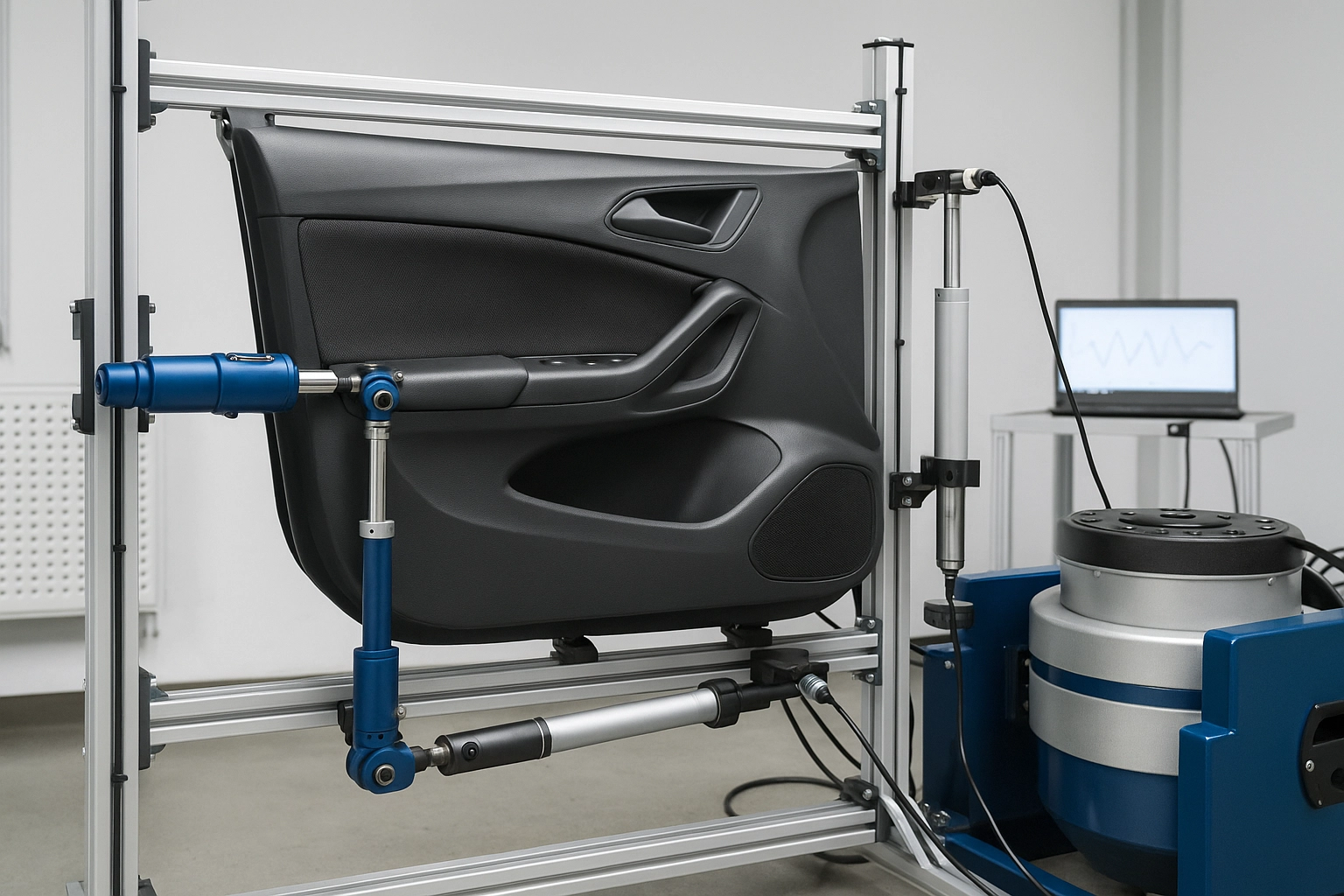SAE J2805 HVAC System Buzz and Rattle Testing
The SAE J2805 HVAC System Buzz and Rattle (BSR) Testing is a critical service designed to ensure the acoustic integrity of automotive heating, ventilation, and air conditioning systems. This testing method aims to identify and mitigate sources of unwanted noise that can degrade passenger comfort and potentially lead to product recalls or reputational damage.
The SAE J2805 standard provides specific procedures for evaluating the BSR characteristics of HVAC systems in automobiles. It focuses on quantifying the buzz, squeak, rattle, and other similar noises generated by HVAC components during operation. The testing methodology involves placing the vehicle under controlled conditions where the HVAC system is operated at various settings to simulate real-world driving scenarios.
The primary goal of this service is not only to meet regulatory requirements but also to enhance product quality through continuous improvement. By identifying noise issues early in the development process, manufacturers can make necessary adjustments before mass production begins. This proactive approach helps reduce costs associated with post-production recalls and ensures customer satisfaction by delivering a superior driving experience.
The SAE J2805 testing process typically involves several key steps: initial setup of the vehicle environment, operation of the HVAC system at different settings, measurement of noise levels using specialized equipment, analysis of recorded data against established thresholds, and finally, generation of reports detailing findings along with recommendations for improvement if needed.
One important aspect to consider when conducting SAE J2805 testing is ensuring that all tests are performed in a controlled environment. This includes maintaining consistent temperature and humidity conditions, as well as using calibrated instruments capable of accurately measuring sound pressure levels across the frequency range of interest (typically 10 Hz to 40 kHz). Additionally, it's crucial to ensure that the vehicle being tested represents typical market models rather than outliers.
Another critical factor is understanding how different components within the HVAC system contribute to overall noise performance. For instance, improper sealing around ducts or poor fitment of grilles can significantly impact sound characteristics. Therefore, thorough inspections and adjustments are often necessary before beginning any testing activities.
In summary, SAE J2805 HVAC System Buzz and Rattle Testing plays a vital role in ensuring automotive comfort while adhering to industry standards. By employing rigorous methodologies and leveraging advanced technology, this service helps manufacturers produce quieter vehicles that meet both regulatory expectations and customer preferences.
Scope and Methodology
The scope of SAE J2805 HVAC System Buzz and Rattle Testing encompasses the evaluation of various components within an automobile's heating, ventilation, and air conditioning system. This includes assessing how different parts interact during operation to produce unwanted noise.
The methodology employed in this testing process involves several critical steps:
- Initial setup: The vehicle is positioned on a test rig designed to replicate real-world driving conditions, including ambient temperature and humidity levels.
- HVAC system operation: The HVAC unit is operated at different settings (e.g., heat, cool, fan speed) to simulate typical usage patterns.
- Noise measurement: Specialized equipment measures sound pressure levels across the frequency spectrum relevant to human hearing.
- Data analysis: Recorded data is compared against predefined thresholds established by SAE J2805 to determine compliance with specified noise limits.
Throughout these stages, meticulous attention must be paid to maintaining consistency between test runs. This ensures reliable results that accurately reflect the actual performance of the HVAC system under consideration.
Industry Applications
- Automobile manufacturers: To ensure new models meet stringent noise regulations and consumer expectations for comfort.
- R&D departments: As part of ongoing efforts to improve product design and functionality through continuous optimization.
- Supplier quality assurance teams: For validating component performance before integration into final products.
- Post-production maintenance facilities: To identify potential issues early in the lifecycle, preventing costly repairs or recalls later on.
Use Cases and Application Examples
The SAE J2805 HVAC System Buzz and Rattle Testing is widely used across various stages of the automotive development lifecycle. Here are some specific use cases:
- Design phase: Early identification of potential noise sources allows designers to incorporate necessary modifications into initial blueprints.
- R&D trials: Continuous testing helps refine prototypes, ensuring they meet both technical specifications and market demand standards.
- Supplier evaluation: Ensures that third-party suppliers deliver components compliant with expected performance levels before integration.
- Final assembly: Post-production checks guarantee that all vehicles leave the factory meeting required quality benchmarks.





